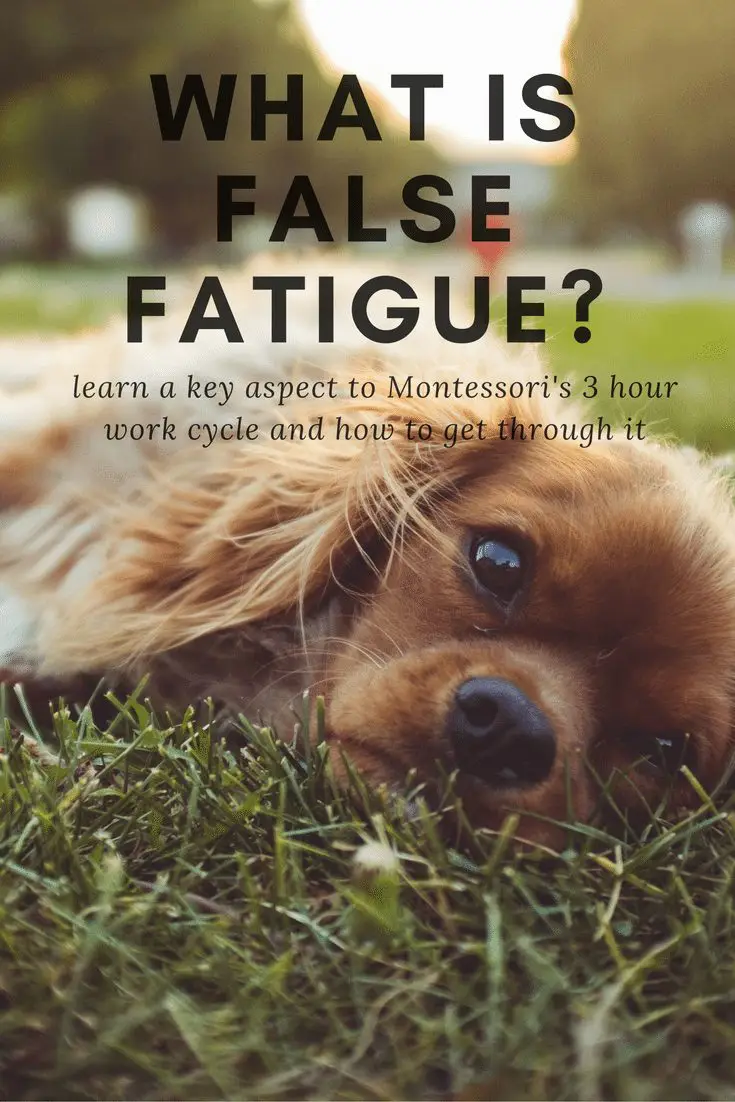False fatigue is a defining period within a child’s work cycle. Once your child settles into his work, you will observe him with a sense of happiness & satisfaction absorbed in his work. Then, about 45 minutes into the morning work cycle, you may notice the noise level rises and it appears the children begin to lose interest in their work.
How to Manage False Fatigue

You begin to notice your child squirming and you realize he is becoming restless. There is good news to this potentially frustrating circumstance. The restlessness is typical and to be expected in the environment. There is even a name for this common obstacle: False Fatigue. False fatigue can be thought of as a requirement for the child to get to the next level, to find his focus and concentration in his own time.
“Work chosen by the children, and carried out without interference, has its own laws. It has a beginning and ending like a day, and it must be allowed to come full circle.” ~ E.M. Standing, Maria Montessori: Her Life and Work
What Is False Fatigue?
Typically false fatigue occurs 45 minutes to 1 hour into the work cycle, is part of the typical 3-hour work cycle, and lasts anywhere from a few minutes to 20 minutes. This timing is based on my experiences. You may experience an earlier/later period of “false fatigue” or a longer/shorter duration.

“If in the period of ‘false fatigue’, at 10 am an inexperienced teacher, interpreting the phenomenon of suspension or preparation for the culminating work as dis-order, intervenes, calling the children to her, and making them rest, etc., their restlessness persists, and the subsequent work is not undertaken.”
Dr. Maria Montessori
Dr. Montessori explained this phenomenon as the child searching for their “maximum interest.” She went on to explain that this period of “false fatigue” is necessary for the child to get to the next level where he will become absorbed in and complete more challenging works in the classroom.
Consider false fatigue in a similar manner that you’d consider having to take a break for fresh air, or to stand up and get away from your desk. The child experiences the same “mental” need, the need for a reset so he may get back to properly concentrating on his work again.
Related Read: How to Observe Children in a Montessori Classroom
What to do as you notice false fatigue
Do you want the short, painful answer? See it through & hold on for the ride. The guide (you) must step back and put full faith in the child and the Montessori environment. If you can avoid disrupting the period of false fatigue, it is likely the child will return to his work with more focus and concentration than the prior period.
What not to do as you notice false fatigue: transition the child to avoid or to mitigate the restlessness. Don’t assume the child is not capable of continuing his work. A Montessori Musing Place writes: “By anxiously stepping in and ‘managing’ at this point, teachers replace the child’s will with their own.” That observation sums up the impact of “doing something” about the false fatigue. Interfering may actually make the period of false fatigue last longer.
Getting through False Fatigue
If you can get through the false fatigue period, your child will achieve greater focus and concentration on his work. So, don’t interfere with this natural point in the morning. Let it be, get through it. As difficult as it is to avoid stopping for a music or Spanish class, try your best to schedule those activities at another point during the day or week.
I hope you found this post useful!
Marnie
